With only literally a couple of handfuls built, the Maserati Quattroporte II was a disastrous endeavor built on a Citroen SM platform and featured one of the great Marcelo Gandini’s least inspired designs. Too high, long and narrow, the Quattroporte II looked ungainly, while its SM platform was brilliant and keeping in character for Citroen, but its complex hydraulics, under-powered Citroen-Maserati V6 and front wheel-drive was out of character for an exotic Italian super-saloon.
 After its Citroen owners went bankrupt in 1974 and after being propped up by the Italian government, Maserati was bought by Argentine Alejandro Tomaso, who put the Quattroporte back on track to becoming among the world’s sexiest, most aristocratic, desirable, haughty and prestigious luxury cars. Designed by Giorgetto Giugaro, the Quattroporte III featured an imposingly high and long nose, seemingly low roofline, sharp uncompromising angular styling and a vast width. Unpretentious and lacking ostentatious adornment, the Quattroporte’s squared lights and bumpers, sharp lines, huge size and aesthetic proportions lent it a stylishly regal and dominant road presence becoming of its rich, powerful and largely Italian VIP clientele.
After its Citroen owners went bankrupt in 1974 and after being propped up by the Italian government, Maserati was bought by Argentine Alejandro Tomaso, who put the Quattroporte back on track to becoming among the world’s sexiest, most aristocratic, desirable, haughty and prestigious luxury cars. Designed by Giorgetto Giugaro, the Quattroporte III featured an imposingly high and long nose, seemingly low roofline, sharp uncompromising angular styling and a vast width. Unpretentious and lacking ostentatious adornment, the Quattroporte’s squared lights and bumpers, sharp lines, huge size and aesthetic proportions lent it a stylishly regal and dominant road presence becoming of its rich, powerful and largely Italian VIP clientele.
 Huge and spacious inside, the Quattroporte III also benefitted from excellent visibility owing to slender pillars and a big glasshouse. With an emphasis on width, the lavish Quattroporte III was fitted with high-quality soft-leather upholstered and large anatomically designed seats set far apart with a wide centre console and a bouffant leather-clad armrest in between. The dashboard, console and doors feature quality leather lining and wood-veneer panels, while the Quattroporte III’s roof lining was velour. Kitted generously for its milieu, the Quattroporte III’ rectangular instrument binnacle was un-fussed and clear. The high spec ultra-limited 1986-90 Royale edition featured slightly rounded-off exterior extremities, better noise suppression and a plusher interior with walnut panels, more cushioning, full-adjustable split rear seats, climate control, portable phone and a rear bar and retractable tables.
Huge and spacious inside, the Quattroporte III also benefitted from excellent visibility owing to slender pillars and a big glasshouse. With an emphasis on width, the lavish Quattroporte III was fitted with high-quality soft-leather upholstered and large anatomically designed seats set far apart with a wide centre console and a bouffant leather-clad armrest in between. The dashboard, console and doors feature quality leather lining and wood-veneer panels, while the Quattroporte III’s roof lining was velour. Kitted generously for its milieu, the Quattroporte III’ rectangular instrument binnacle was un-fussed and clear. The high spec ultra-limited 1986-90 Royale edition featured slightly rounded-off exterior extremities, better noise suppression and a plusher interior with walnut panels, more cushioning, full-adjustable split rear seats, climate control, portable phone and a rear bar and retractable tables.
 Offered with 4.1- or 4.9-liter growling quad-cam V8 engines, the Maserati Quattroporte delivered fluid and progressive output including a flexible mid-range and high-end power. Rated at 255HP at 6000rpm, the 4.1-liter Quattroporte was quick, but the beefier bored and stroked 4.9-liter version served 284HP at 5600rpm and 289lb/ft at 4000rpm, while the Royale was re-tuned for 300HP at 5600rpm and 289lb/ft5 at a lower-revving 3000rpm for even better mid-range and on-the-move flexibility and response. With the Quattroporte III’s weight ranging between nearly 1800kg to just shy of 2000kg, even the 1940kg three-speed auto Royale delivered a very swift 6.5-second 0-100km/h sprint and a continent-shrinking 230km/h. Gearbox choices were a 5-speed manual or ultra-smooth 3-speed Chrysler-sourced Torqueflite slush-box automatic.
Offered with 4.1- or 4.9-liter growling quad-cam V8 engines, the Maserati Quattroporte delivered fluid and progressive output including a flexible mid-range and high-end power. Rated at 255HP at 6000rpm, the 4.1-liter Quattroporte was quick, but the beefier bored and stroked 4.9-liter version served 284HP at 5600rpm and 289lb/ft at 4000rpm, while the Royale was re-tuned for 300HP at 5600rpm and 289lb/ft5 at a lower-revving 3000rpm for even better mid-range and on-the-move flexibility and response. With the Quattroporte III’s weight ranging between nearly 1800kg to just shy of 2000kg, even the 1940kg three-speed auto Royale delivered a very swift 6.5-second 0-100km/h sprint and a continent-shrinking 230km/h. Gearbox choices were a 5-speed manual or ultra-smooth 3-speed Chrysler-sourced Torqueflite slush-box automatic.
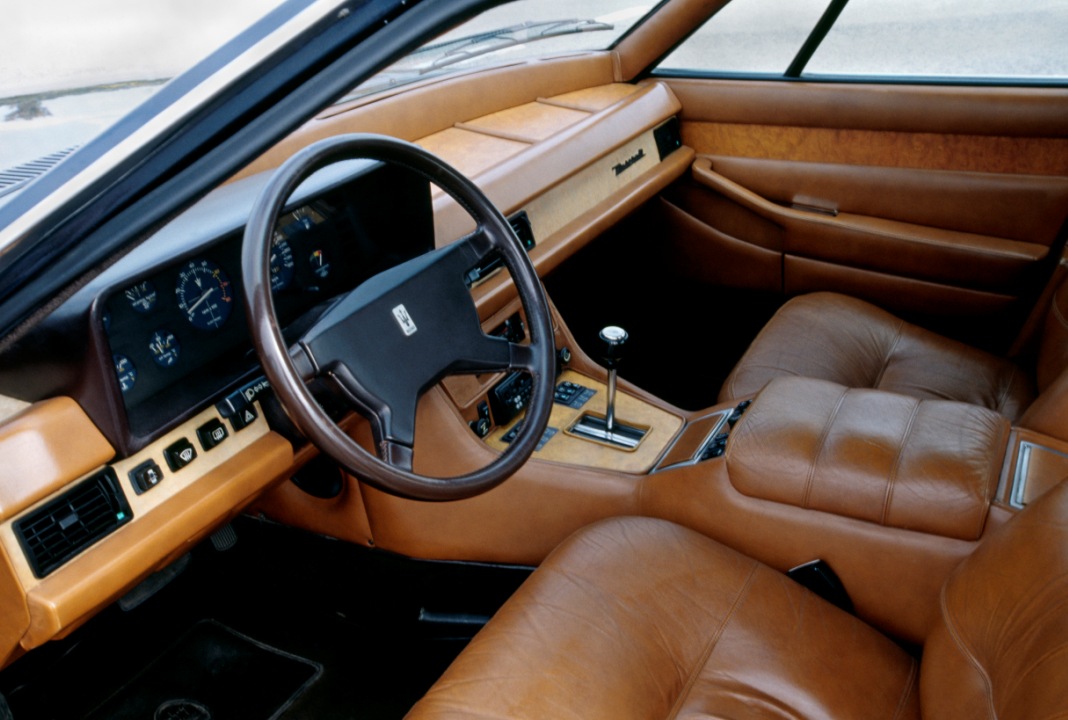 Best on fast autostadas, the Quattroporte III is super-smooth, refined and stable at high speed, while in town wafted and ironed away road imperfections for utmost passenger comfort. The Quattroporte III shared a similar rear suspension design to the Jaguar XJ and floor panels with the De Tomaso Longchamp, and with its sporting Maserati heritage, all-round independent suspension, in-board brakes, quick steering ratio and Sensitork limited-slip rear differential, belied its weight in handling. Poised for its class through swift B-roads, the Quattroporte III was balanced and fluid, with good cornering and wet traction and grip owing to Sensitork. With a judicious combination of ride, handling, luxury, power and stability, the Quattroporte III was a stylish and grand sporting luxury car satisfying to drive or be chauffeured in.
Best on fast autostadas, the Quattroporte III is super-smooth, refined and stable at high speed, while in town wafted and ironed away road imperfections for utmost passenger comfort. The Quattroporte III shared a similar rear suspension design to the Jaguar XJ and floor panels with the De Tomaso Longchamp, and with its sporting Maserati heritage, all-round independent suspension, in-board brakes, quick steering ratio and Sensitork limited-slip rear differential, belied its weight in handling. Poised for its class through swift B-roads, the Quattroporte III was balanced and fluid, with good cornering and wet traction and grip owing to Sensitork. With a judicious combination of ride, handling, luxury, power and stability, the Quattroporte III was a stylish and grand sporting luxury car satisfying to drive or be chauffeured in.
- Engine: 4.9-liter, in-line V8-cylinders
- Bore x stroke (mm): 93.9 x 89mm
- Compression ratio: 9.5:1
- Valve-train: 16-valve, DOHC, 4 Weber carburetors
- Gearbox: 3-speed automatic, rear-wheel-drive
- Top gear / final drive ratios: 1:1 / 3.07:1
- Gross power, PS (BHP) [kW]: 300 (296) [220] @ 5600rpm
- Specific power: 59.8BHP / liter
- Power-to-weight ratio: 152BHP / ton
- Torque, lb/ft (Nm): 296 (402) @ 3000rpm
- Specific torque: 81.5Nm / liter
- 0-100km/h: 6.5-seconds
- Standing km: 30-seconds
- Top speed: 230km/h
- Fuel capacity: 100 liters
- Height: 1385mm
- Width: 1890mm
- Length: 4910mm
- Wheelbase: 2800mm
- Track, front & rear: 1525mm
- Ground clearance: 125mm
- Kerb weight: 1940kg
- Steering: Rack & pinion, power assisted
- Lock-to-lock: 2.5 turns
- Turning circle: 12.5 meters
- Suspension: Independent, wishbones, coil spring, anti-roll bar
- Brakes, front / rear: Ventilated discs, 284 / 282 mm
- Tires: 215/70VR15


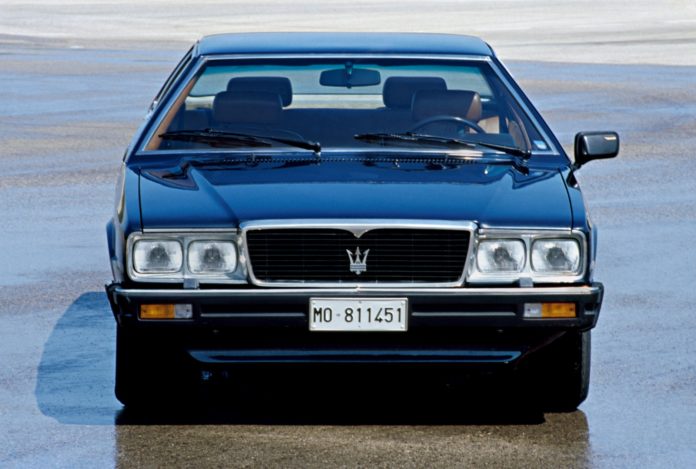


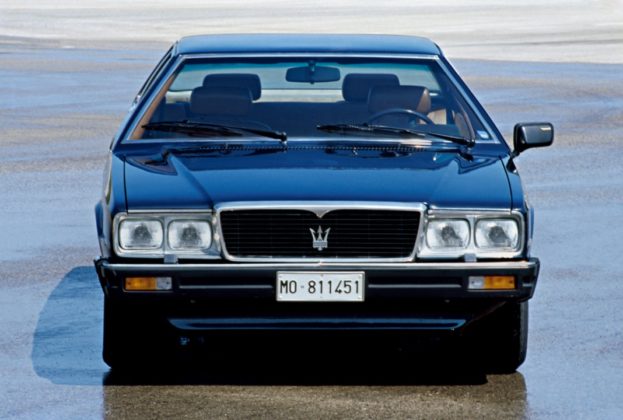
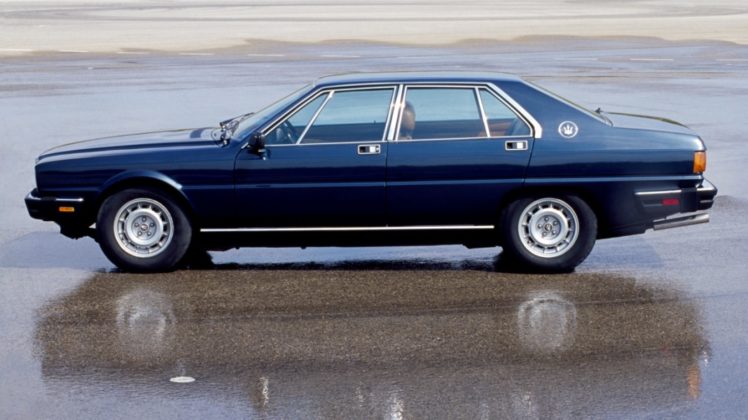
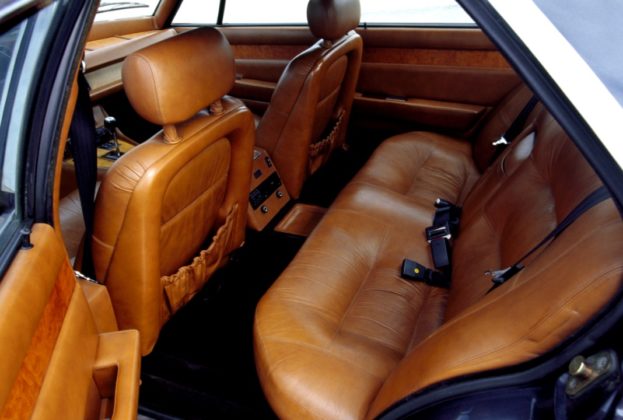


























Recent Comments